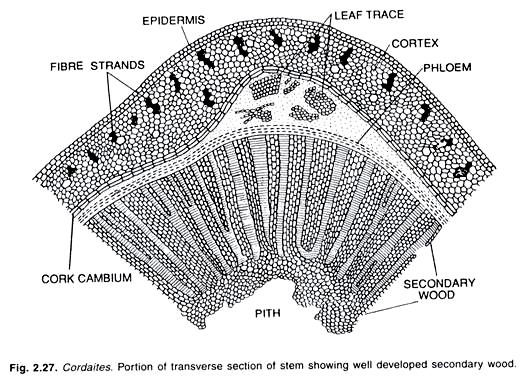ADVERTISEMENTS:
Experiment to Observe Temporary Mount of a Leaf Peel to Show Stomata!
Experiment:
Objective:
To prepare a temporary mount of a leaf peel to show stomata.
Apparatus and Materials Required:
A potted Tradescantia or Bryophyllum plant, forceps, needles, watch glasses, glass slides, a dropper, coverslips, a brush, blotting paper, safranin, glycerine and a compound microscope.
Theory:
ADVERTISEMENTS:
Stomata are small openings found widely scattered on the epidermis of leaves and young stems. They are mostly found on the lower surface of a dicot leaf and on both the surfaces of a monocot leaf. Stomata regulate the exchange of gases and water vapour between the atmosphere and leaves.
Procedure:
1. Remove a healthy leaf from the potted plant.
2. Remove a part of the peel from the lower surface of the leaf. You can do this by folding the leaf over and gently pulling the peel apart using forceps. Keeps the peel in a watch glass containing water.
3. Put a few drops of safranin stain in a watch glass.
ADVERTISEMENTS:
4. After 2-3 minutes take out the peel and place it on a clean glass slide.
5. Put a drop of glycerin over the peel and place a clean coverslip gently over it with the help of a needle.
6. Remove the excess stain and glycerin with the help of blotting paper.
7. Observe the slide under the low-power and high-power magnifications of the compound microscope.
Observations:
1. The epidermal cells are visible. These are irregular in outline and have no intercellular spaces.
2. Many small pores (stomata) are seen scattered among the epidermal cells.
3. Each pore is guarded by two bean-shaped guard cells, each containing chloroplasts and a nucleus.
4. The inner concave boundary of each guard cell is thick, whereas its outer boundary is thin.
ADVERTISEMENTS:
5. The stomata may be open or closed. The guard cells regulate the opening and closing of the stomata.
Result:
Stomata are present in the epidermal cells of the lower surface of the leaf.
Precautions:
1. Cut the peel to a proper size and avoid folding it.
ADVERTISEMENTS:
2. Always place the peel at the centre of the slide and hold the slide at the edges.
3. Do not overstrain or under strain the peel.
4. Always handle the peel with a brush as a needle may damage the cells.
5. Take care to prevent the peel from drying by using glycerin.
ADVERTISEMENTS:
6. Place the coverslip gently, avoiding any air bubbles.
7. Remove excess stain and glycerin with a blotting paper.


